Wisbech, Cambridgeshire
Up to 1834
A parish workhouse existed at Wisbech (or Wisbeach) from 1720 (Hampson, 1934; Murphy, 1978). A parliamentary report of 1777 listed a parish workhouse in operation at Wisbech St Peter's for up to 150 inmates. In 1818, the adjacent parish of Wisbech St Mary erected a workhouse on Bunker's Hill.
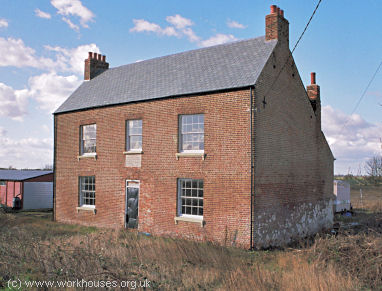
Wisbech St Mary parish workhouse from the south-east, 2004.
© Peter Higginbotham.
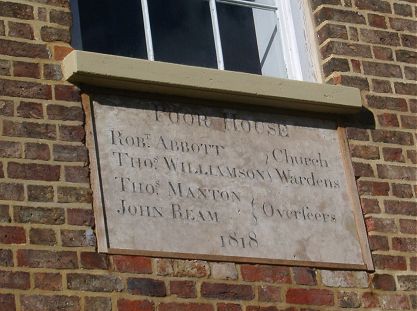
Wisbech St Mary parish workhouse, 2004.
© Peter Higginbotham.
Terrington St Clement's had a small workhouse which by the 1830s housed around 15 inmates.
After 1834
Wisbech Poor Law Union was formally created on 23rd May 1836. Its operation was overseen by an elected Board of Guardians, 31 in number, representing its 12 constituent parishes as listed below (figures in brackets indicate numbers of Guardians if more than one):
County of Cambridge:
Wisbeach St Peter's (8), Wisbeach St Mary's (3), Elm (3), Leverington (2), Parson Drove, Newton, Tyd — St Giles (2),
County of Norfolk:
Emneth (2), Walpole St Andrew's, Walpole St Peter's (3), Walsoken (3), West Walton (2).
The population falling within the union at the 1831 census had been 18,792 with parishes ranging in size from Newton (population 431) to Wisbeach St Peter's (7,253). The average annual poor-rate expenditure for the period 1833-35 had been £11,919 or 12s.8d. per head.
Not long after its initial formation, the union was joined by the Cambridgeshire parishes of Outwell and Upwell, and the Norfolk parishes of Clenchwarton, Outwell, Terrington St Clement's, Terrington St John, Tilney All Saints, Tilney-cum-Islington, Tilney St Lawrence, and Upwell.
Wisbech Union workhouse was built in 1837-8 at Wisbech at a cost of £6,900. It was designed by William Donthorn who also responsible for the workhouses at Ely and for several in Norfolk, including Aylsham, Downham, Erpingham, Freebridge Lynn, and Swaffham. His design for Wisbech was, like Ely, a variation on the popular cruciform or "square" plan, with shallow front yards. The buildings were in Donthorne's characteristic Tudor Gothic style.
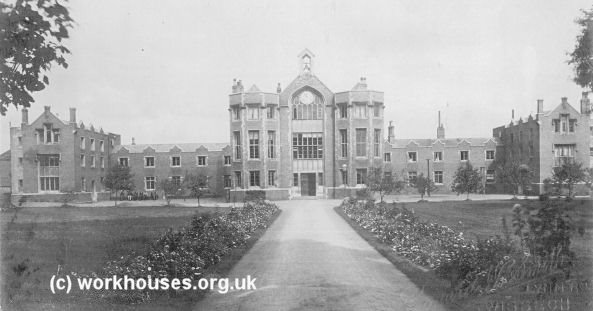
Wisbech workhouse from the south, early 1900s.
© Peter Higginbotham.
The workhouse locationa and layout is shown on the early 1900s map below:
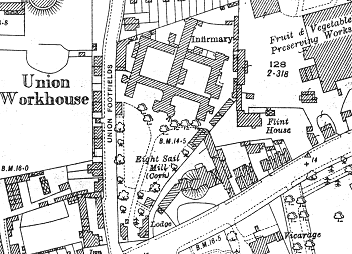
Wisbech site, 1900.
The workhouse inmates received occasional entertainments, outings and other treats. The picture below shows a 'poor law tea', thought to date from the 1920s, with a 'spread' organised by the mayor of Wisbech.
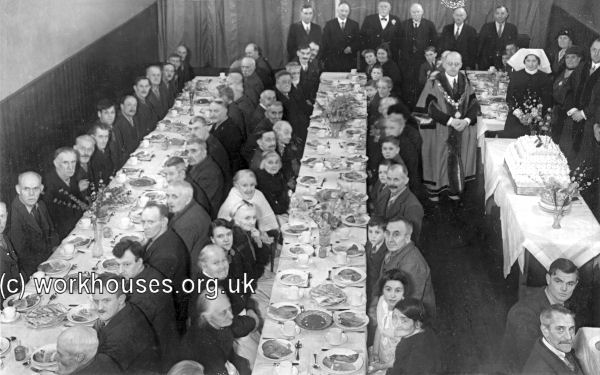
Wisbech poor law tea, c.1920s.
© Peter Higginbotham.
From 1912 to 1930 the workhouse became officially known as Wisbech Poor Law Institution, then as just Wisbech Instution. After the introduction of the National Health Service in 1948, it became Clarkson Geriatric Hospital and is believed to have been demolished in the early 1980s.
Staff
Inmates
Records
Note: many repositories impose a closure period of up to 100 years for records identifying individuals. Before travelling a long distance, always check that the records you want to consult will be available.
- Cambridge Archives and Local Studies, Box SH 1009, Shire Hall, Castle Hill, Cambridge CB3 0AP. Holdings include: Births (1914-42); Deaths (1914-54); Guardians' minutes (1859-1930 with gaps); etc.
Bibliography
- Hampson, E.M. (1934) The Treatment of Poverty in Cambridgeshire, 1597-1834 (Cambridge Studies in Economic History; CUP).
- Hitchcock, T.V. (1985) The English workhouse: a study in institutional poor relief in selected counties. l695-l750. (DPhil thesis. University of Oxford.)
- Murphy, M.J. (1978) Poverty in Cambridgeshire (Cambridge Town, Gown, and County; Oleander Press).
- Rogers, Kevin In the Wishech Workhouse
Links
- None.
Unless otherwise indicated, this page () is copyright Peter Higginbotham. Contents may not be reproduced without permission.


